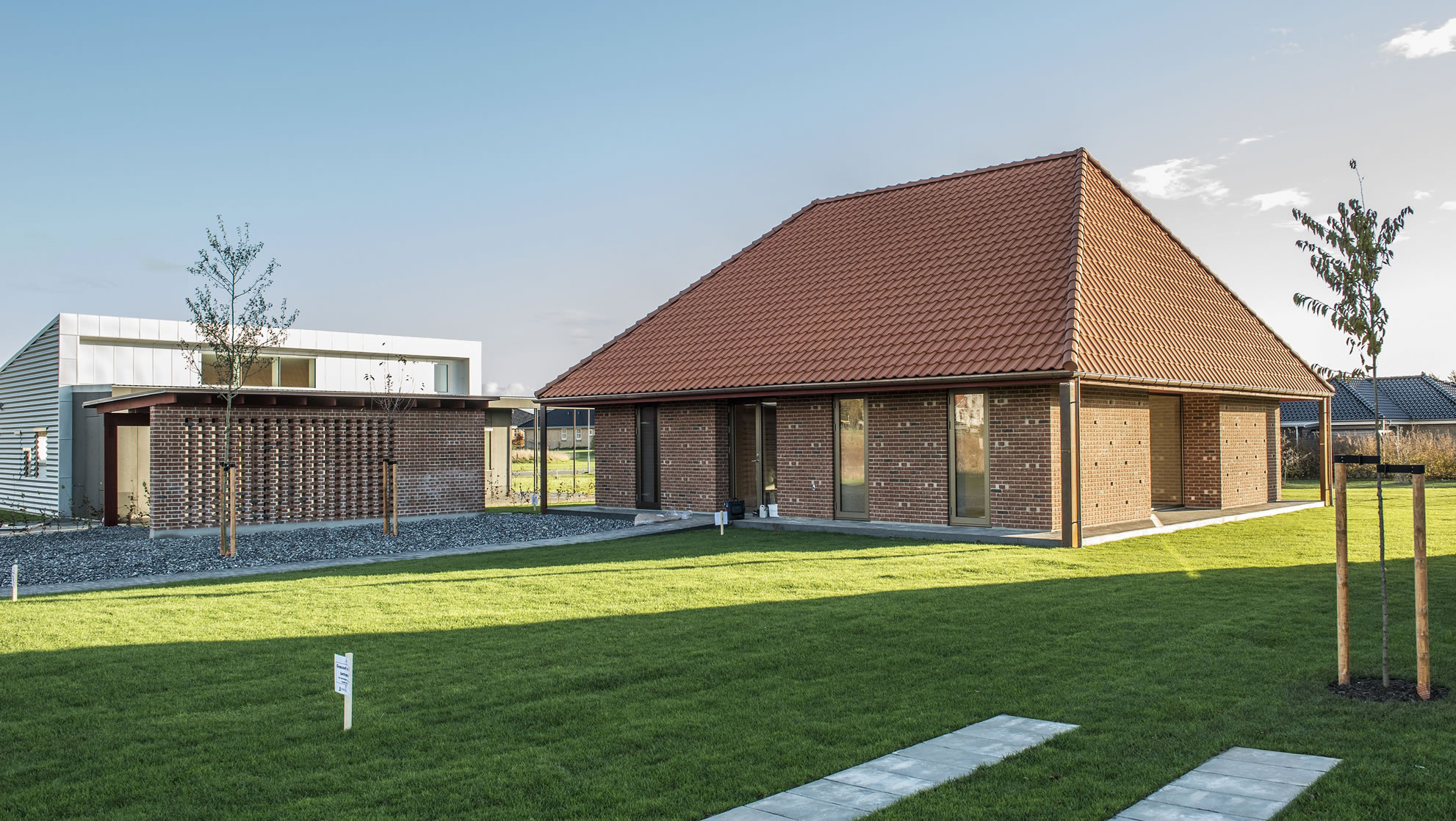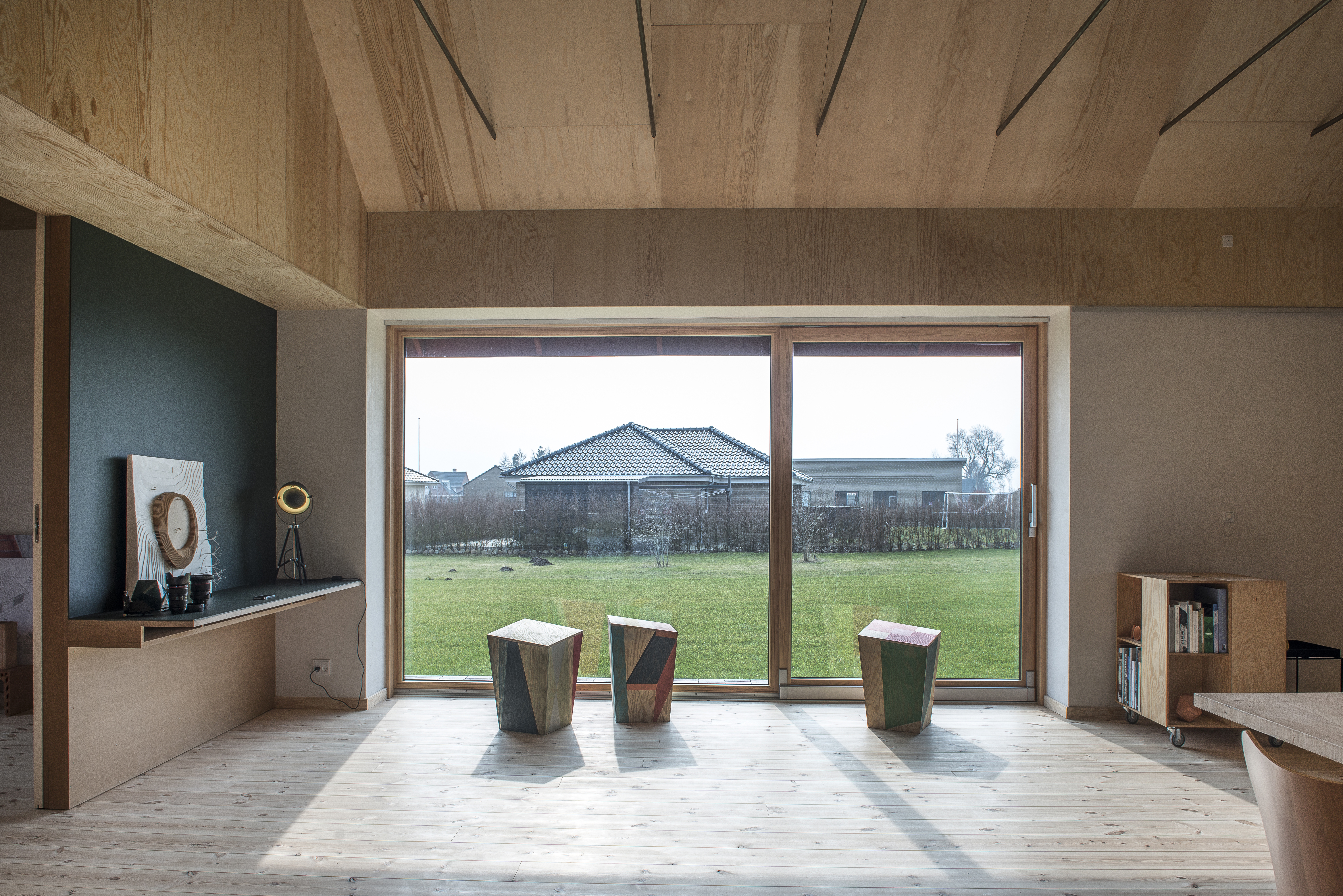Log ind info
The lifetime of a building and its maintenance are key factors in reducing a house's carbon emissions. So there is a strong incentive to try to increase the lifetime of a house from the typical 50 years to three-times this lifespan. With a lifetime of 150 years, and furthermore no maintenance for the first 50 years, it will be possible to save as much CO2 as it takes to build three new houses.

The traditional Maintenance-Free House is part of a major development project: The MiniCO2 Houses. The project comprises six houses, each of which illustrates different ways of reducing carbon emissions when constructing, operating and maintaining a house.
The Maintenance-Free Houses focus on maintenance and lifetime and examine how much carbon can be saved by building a house to last for at least 150 years and such that the building envelope will not require maintenance for the first 50 years. House A – the house described here – was built using traditional materials which have proven their long life expectancy, while House B was constructed using new materials which are expected to have a long lifetime.
With this in mind, the traditional Maintenance-Free House was constructed using building methods which have for centuries proven their durability. The materials used principally comprise red bricks, i.e. clay dug up from the earth, shaped into bricks and fired, then used to build walls bricked with the help of mortar, in the same manner as buildings in Denmark have been built for almost 1,000 years. The house features glass doors, floor-to-ceiling window sections and a fully hipped tiled roof. The house rests on a plinth that functions as a roofed veranda, sheltered by the roof's large eaves, which extend from all sides of the building.
The interior of the Maintenance-Free House is shaped like a living organism, with spacious alcoves, pockets, recesses, bulges, intervening spaces, etc. The layout of the house recalls that of a town, with its communal area like an expansive town square; the open, high-ceilinged and well-lit space which presents a full panorama from façade to façade and gable to gable; the rooms of the house evoking the intimate and encircling buildings which delineate the town's narrow streets and open squares.
The house is based on two key elements which provide a wide range of benefits: Interlocking masonry walls and large eaves.
The outer walls are constructed from solid brick constructed without the use of vapour barriers or insulation. The walls comprise an inner wall made up of large masonry blocks which insulate using a large number of small cavities, and a traditional brick wall façade taking the form of a so-called half-bricked running bond with headers cut into the underlying masonry blocks. The traditional bricks provide the house with a maintenance-free and sustainable outer surface.
The construction of the walls using only a single material provides protection against damage. Different materials expand and contract differently in response to changes in temperature, which over time can give rise to cracks and subsequent damage. A wall constructed solely from one material, however, will move uniformly, avoiding the risk of damage.
The simple masonry construction without vapour barriers provides the building with a structure that can absorb and release moisture and thereby regulate fluctuations in humidity, resulting in a healthier indoor climate.
The denseness of the wall enables it to store heat in the wintertime and cold in the summer months, and to balance out temperature fluctuations between day and night, further ensuring an optimum indoor climate.
The interior surfaces are made up of masonry blocks, rendered walls and wooden panels. None of these surfaces require regular maintenance in the form of painting or the like.
The roof employs a collar beam construction which does not breach the roof surface. The steeply angled roof allows water to run off quickly, minimising the risk of damage. The roof is insulated using cellulose wool, which has good moisture wicking properties, eliminating the need for a vapour barrier. The eaves of the roof extend approximately 1 meter out on all four sides of the house. The eaves protect the brickwork, doors and windows, meaning that the building envelope will in all likelihood last 150 years without the need for maintenance over the first 50 years of its life.
Carbon emissions resulting from consumption of materials over the lifecycle of the Maintenance-Free House are in line with that of an average house, i.e. the Reference House (both are at round 5 kg CO2/m2/year over a period of 50 years). In other words, the steps taken to ensure that the building has a longer lifespan and reduced maintenance requirements have not resulted in increased carbon emissions.
The long lifetime could mean that the house will last at least twice as long as an ordinary house. If this turns out to be the case, the savings achieved will be significantly larger.
Replacement of materials in the Maintenance-Free House A is estimated to make up approximately 0.4 kg of the house’s total carbon emissions of 5 kg over a period of five years, compared with 0.6 kg for the Reference House. Therefore, the low maintenance design of the house in does not profoundly reduce the house’s carbon emissions. This is because the building components which produce the greatest amount of CO2 such as foundations, glass and mineral wool insulation rarely require maintenance, whereas the elements which normally require replacement over the lifetime of a house – doors, windows, internal surfaces etc. – are not especially CO2-intensive. Nonetheless, the study demonstrated that, while small, this proportion of the total carbon emissions is 30% below that of the Reference House, indicating that large eaves and hard-wearing interior and exterior surfaces have a positive impact. It is also worth noting that the low maintenance requirements of these elements of the house mean less worry and less money spent on builders and materials for the homeowner.
The large amount of masonry in the Maintenance-Free House means that the outer walls in particular have a large impact on the building’s overall carbon accounts. While the roof structure also comprises a large area coated with brick tiles, its contribution to carbon emissions remains modest because the roof is also made up of a large amount of carbon-binding wood, both in its load-bearing structure and roof sheathing. In addition, cellulose wool is used as roof insulation.
Taken together, the results indicate that, if the construction and design used in Maintenance-Free House A result in a longer lifetime for the house as a whole, the net benefit will be lower carbon-emissions over the expected lifetime of the house.

Credit: Jesper Ray Manley and Karsen Gori
Southern Denmark (Funen)
LETH & GORI
2012-2014
Sustainable construction